Semi-automatic pistols are great. Their detachable box magazines mean you get to fire more shots in between reloads – not to mention reload much faster. But there’s a certain romance to the revolver which the semi-auto will never match. Sliding a fresh cartridge into a waiting cylinder, closing the thing shut with a satisfying click, and then watching that wheel spin in anticipation of each shot is a priceless experience.
Furthermore, the revolver’s simple design suggests it is more reliable than semi-auto pistols. You can’t have a feeding jam in a handgun that’s already fed, and when you encounter a dud you only have to keep pulling the trigger.
Selecting Your Revolver Caliber

Newer shooters often wonder which revolver is right for them. Arriving at the best choice begins with selecting the right cartridge. Some are too weak (or arguably too weak) for self-defense. Others are just right. Still others generate too much recoil for personal protection, and indeed would only be useful for protection against bears. (Sorry, Yogi.)
This list of revolver cartridges isn’t exhaustive. For instance, the 442 Webley may have done right by Sherlock Holmes, but you won’t be able to find that ammo these days without doing some serious sleuthing. Also, some revolvers which are chambered for conventionally semi-automatic rounds like 9mm are also available. We’ll skip those in favor of dedicated revolver rounds, or at least rounds that are not predominantly associated with semi-automatic handguns. With that, here are the most popular revolver rounds!
| Cartridge | Bullet Weight (grains) | Barrel Length (in) | Muzzle Velocity (fps) | Muzzle Energy (ft lbs) |
|---|---|---|---|---|
| 22 LR | 40 | 4" | 1014 | 91 |
| 32 S&W Long | 98 | 6" | 787 | 135 |
| 22 WMR | 40 | 4" | 1287 | 147 |
| 32 H&R Magnum | 85 | 4" | 1031 | 201 |
| 45 Long Colt | 225 | 4" | 757 | 286 |
| 38 Special | 135 | 4" | 1027 | 316 |
| 44 Special | 165 | 4" | 1013 | 376 |
| 357 Magnum | 158 | 4" | 1332 | 622 |
| 44 Magnum | 240 | 4" | 1251 | 834 |
Our chart is provided for quick reference only. Bullet weights, muzzle velocities and muzzle energies all vary widely among cartridges. Without getting too into it, you generally want your carry weapon’s bullet to hit the threat with at least 220 to 300 ft lbs of kinetic energy. You can make do with less impact energy, but it’s not ideal.
22 LR
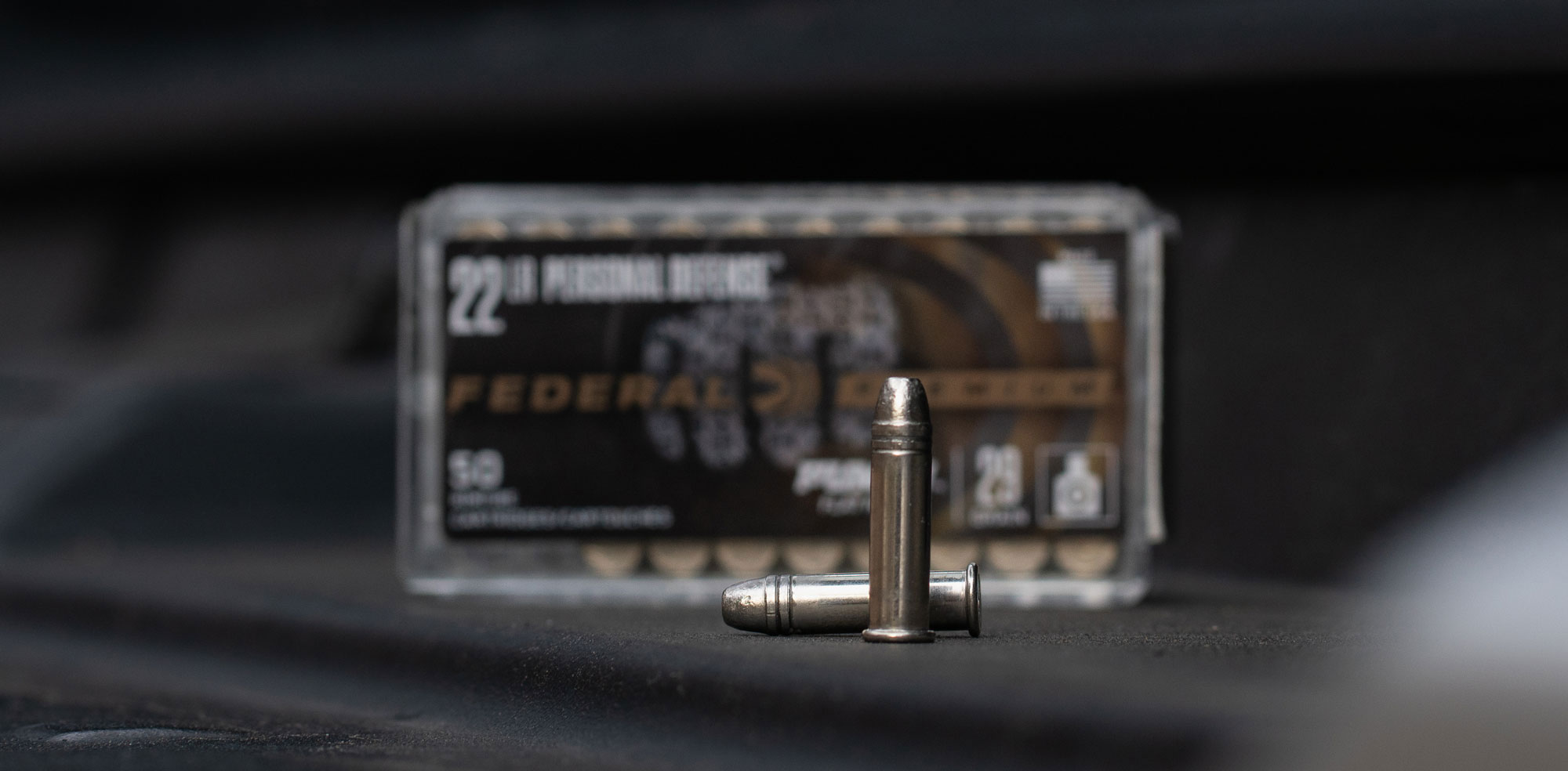
The 22 Long Rifle is the most popular cartridge in the world. Its low cost, gentle recoil and quiet report make it especially popular for recreational target shooting, and it is also the bane of many a small varmint.
Rifles are commonly chambered for 22 LR. As a general rule, a bullet’s muzzle velocity becomes faster in proportion to the length of the barrel it’s fired from. In other words, when you read a 22 LR round’s muzzle velocity, you are probably reading its muzzle velocity from a longer barrel. A revolver’s short barrel simply cannot put as much propulsion behind a 22 LR bullet!
22 LR revolvers and derringers are often carried for personal protection. Although a 22 LR is certainly capable of incapacitating a threat with good aim (and a little luck), a small 22 LR revolver’s primary appeal is its reliability and concealability.
32 S&W Long
The 32 S&W Long (or just 32 Long) is a 19th century cartridge. It received a massive boost in popularity thanks to the Colt New Police revolver, which became standard issue for many cops during the early 20th century. The 32 Long remains somewhat popular for self-defense, although it has been surpassed in power by many newer revolver rounds. Importantly, a revolver chambered for 32 Long can also safely fire 32 S&W (aka 32 S&W Short; but not vice versa).
If it wasn’t for so many Americans inheriting their dads’ Colts, we doubt the 32 Long would be half as popular as it is today. If you’re shopping for a revolver, we’d advise buying something chambered for a more powerful (and more readily available) cartridge. A smaller 38 Special revolver is actually more effective for personal protection than a larger one chambered for the effectively obsolete 32 Long!
22 WMR
Alongside the 22 LR, the 22 WMR is the only other rimfire-primed cartridge in this short list. Rimfire-primed rounds are nearly always weaker than Boxer-primed ones; they are also generally less reliable. But like the 22 LR, the 22 WMR is small and thus suitable for easily concealed firearms. A pocket gun may not be the ideal solution for self-defense, but if it’s the only firearm you can carry practically then you will just have to make it good enough!
32 H&R Magnum
The 32 H&R Magnum, albeit a great cartridge, failed to achieve commercial success after its introduction in the early ‘80s. As effective as it might prove for self-defense, finding good 32 H&R Magnum ammo is becoming an increasing tall order as time marches on.
But the 32 H&R Magnum does have something really neat going for it. A 32 H&R Magnum revolver can also safely fire both 32 S&W and 32 Long ammunition! A true jack of all trades.
45 Long Colt
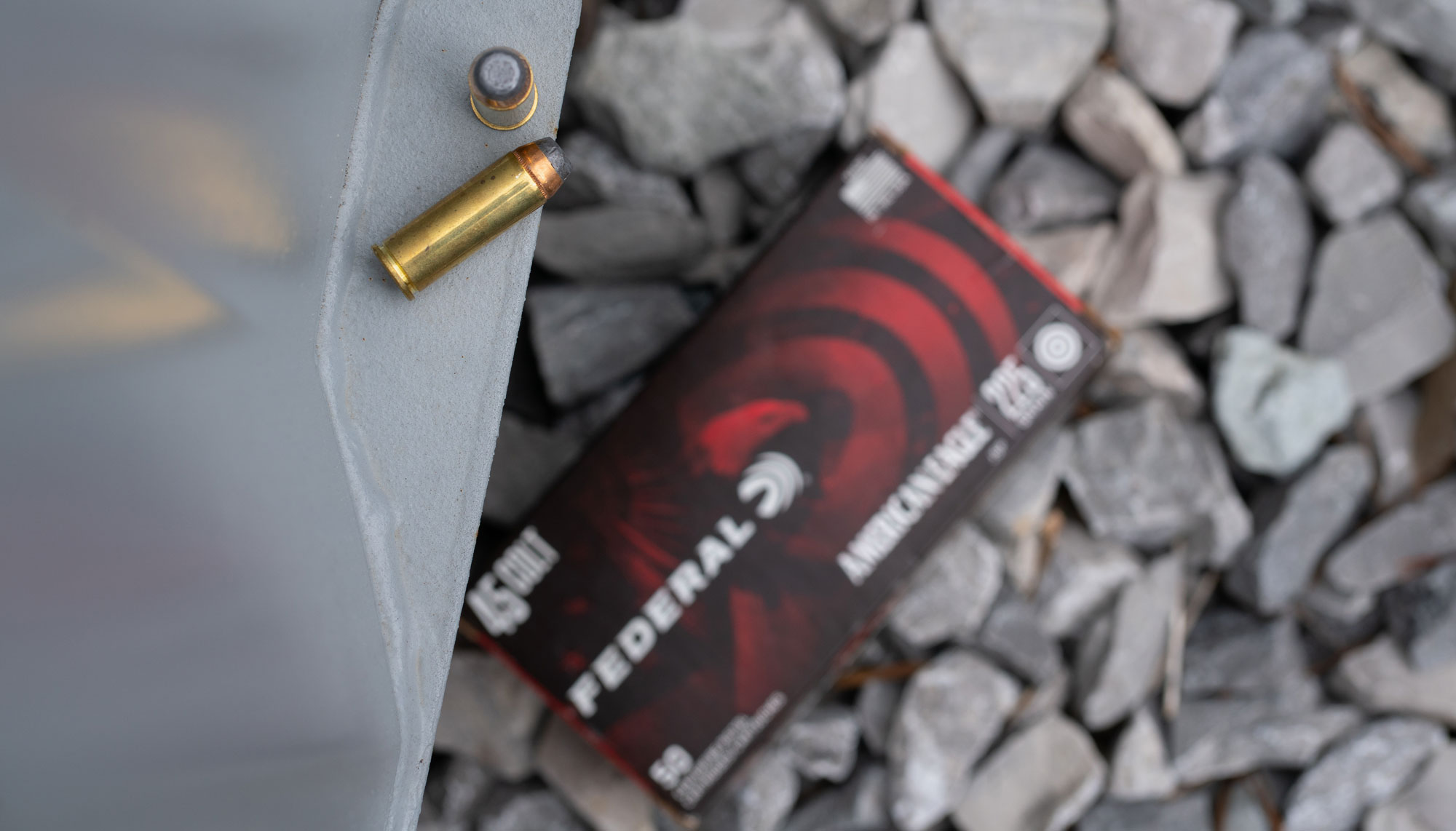
Also known as the 45 Colt, this round has a pedigree: It was originally developed for the legendary Colt Single Action Army revolver. Historic firearm enthusiasts understandably love the 45 Colt, but it has also seen something of a renaissance lately thanks to the efforts of S&W and Taurus. Their Governor and Judge revolvers, respectively, are chambered for both the 45 Colt and the 410 Bore shotshell. Pretty nifty if you want a revolver that also doubles as a weak shotgun.
38 Special
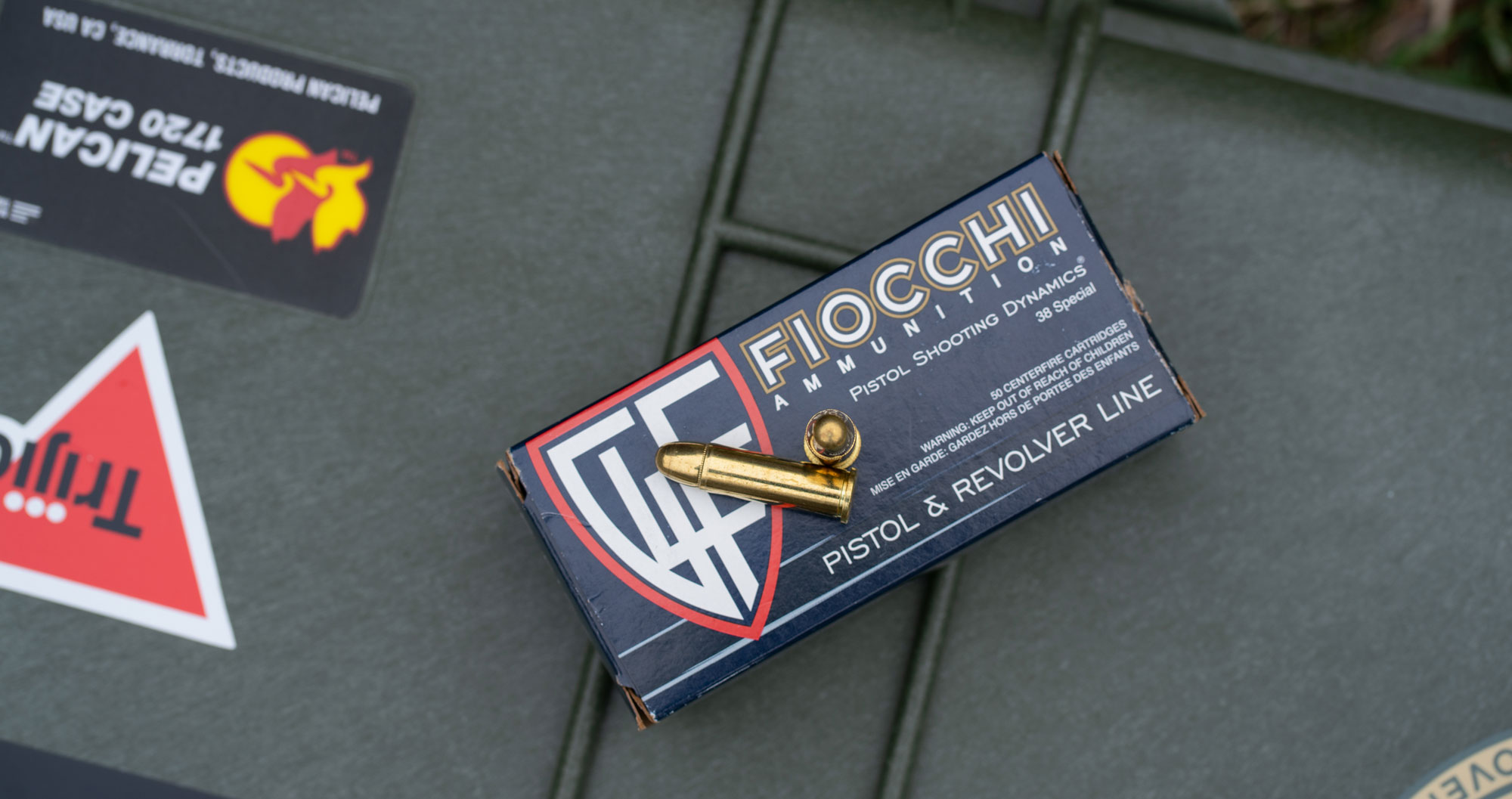
Fiocchi’s 38 special line-up is incredibly popular among revolver shooters for training.
The 38 Special is not a powerful revolver cartridge by any reasonable measure, but it is quite capable of handling a threat. It is also one of the most popular pistol rounds on the market, which means you should have little trouble finding ammo if you select a 38 Special revolver for self-defense.
The 38 Special is still weak enough to permit the design of a relatively small revolver. A hammerless S&W 642 weighs 14.4 ounces and is only 6” long overall, which makes it easy to carry inside the waist. And if you’d like to pack as much power as you can into your self-defense loads, then any modern 38 Special revolver should also be rated to safely fire +P ammo. 38 Special +P may generate greater recoil, but more kinetic energy on impact may make it worthwhile.
44 Special
The 44 Special is like the 38 Special’s bigger brother. Its wider bullet hits the target with greater force – hence the 44 Special’s greater stopping power. You do have to carry around more handgun in order to utilize the 44 Special, however. With its shortest barrel the S&W 629 tips the scale at 39.6 ounces. At that point you might as well take the next step up into 357 Magnum country.
357 Magnum
The 357 Magnum was developed directly from the 38 Special. One fanatical handloader named Elmer Keith kept pouring power into the 38 until it became an altogether different cartridge. He wouldn’t be truly happy with his work until he came up with the 44 Magnum, though!
The 357 Magnum sits around the point at which revolver cartridges become powerful enough for deer hunting. (A good marksman can drop a whitetail with a 22 LR, but it’s generally not advisable to go much lower than 357 Magnum.) Take care that some folks find the 357 Magnum’s recoil a little too snappy for comfort. It’s a try-before-you-buy kind of cartridge.
The 357 Magnum’s physical dimensions are so close to those of the 38 Special that a revolver chambered for 357 magnum ammo can also fire 38 (but not vice versa).
44 Magnum

There are several more powerful revolver rounds than the 44 Magnum, but at this point we’re already talking overkill when it comes to self-defense. Even Dirty Harry, who made the 44 Magnum famous, once admitted to firing special light loads in his iconic S&W 29. For the record, he wasn’t firing 44 Special – the round Elmer Keith developed the 44 Magnum from, and which is also compatible with 44 Magnum revolvers (but not vice versa).
There’s zero question that a direct hit with a 44 Magnum will neutralize a threat quickly. The problem is the recoil. In the hands of the average shooter, this ferocious round produces quite a lot of kick. Recoil will jerk the barrel of the revolver upward, which means it will take longer to restore your aim on the target. In other words, you really don’t want to miss a threat with the 44 Magnum – it can give your opponent too much time to retaliate.
The Big Boys
Revolvers are sturdy firearms, so they can be chambered for far more powerful rounds than a semi-auto, with all its moving parts, could ever accommodate. Cartridges like 45-70 Government, 460 S&W Magnum, 480 Ruger and 500 S&W Magnum are all great fun to fire, suitable for hunting medium-to-large game, and also good for defense against large bears. But you wouldn’t want to carry around so massive a revolver – nor would you want to fight against its recoil when you are confronted by a threat.
We carry all these calibers for sale at our site. Head to our handgun ammo section see what rounds are ready for you today!

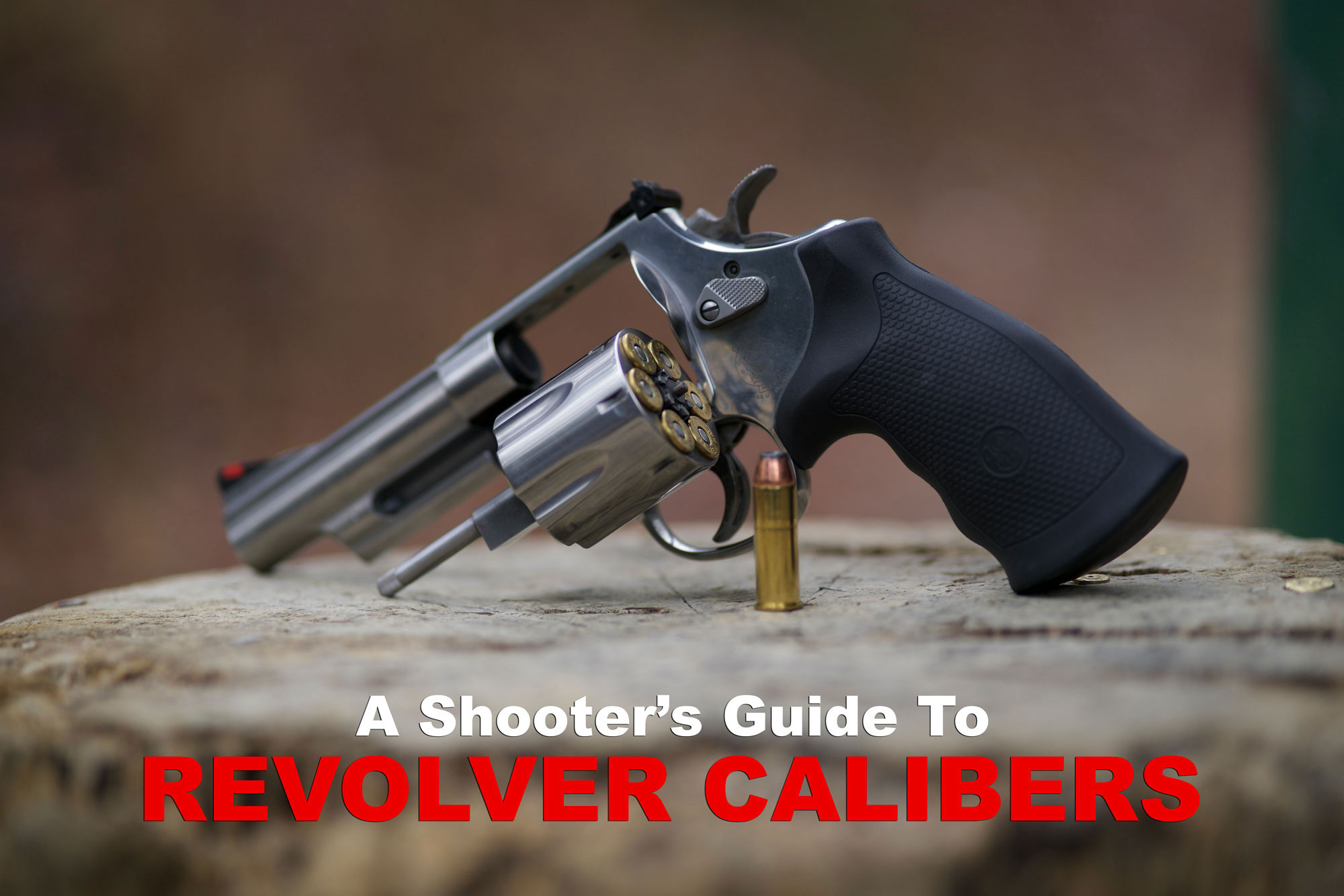


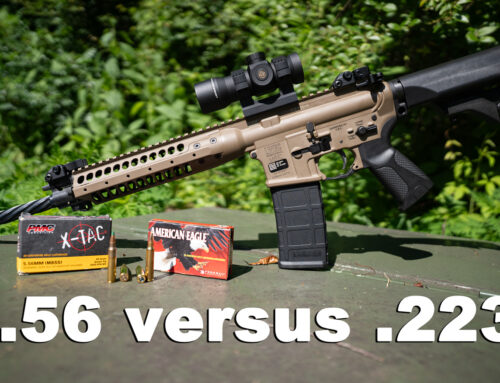

nice info
Can someone answer my questions?
If the weight of a gun is “grains” how do you determine the wt?
fps what does this mean for velocity, what do the initials stand for?
ft lbs for muzzle energy does this mean how many feet it will shoot per lb of gun weight?
Sure thing Pat –
1 grain is equal to 1/7000th of a pound.
FPS means feet per second. It’s the way we measure velocity of bullets.
Ft-lbs is a measure of energy. One foot-pound is the energy equal to the amount required to raise 1 pound a distance of 1 foot.